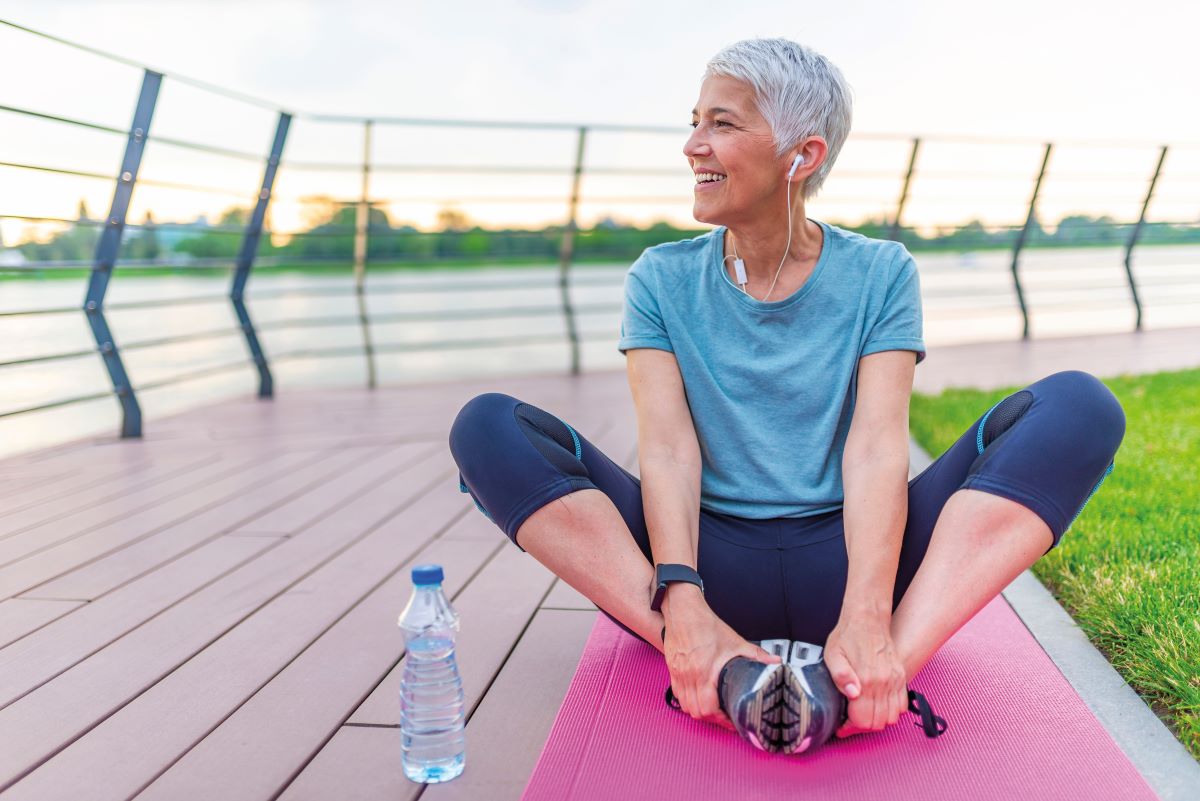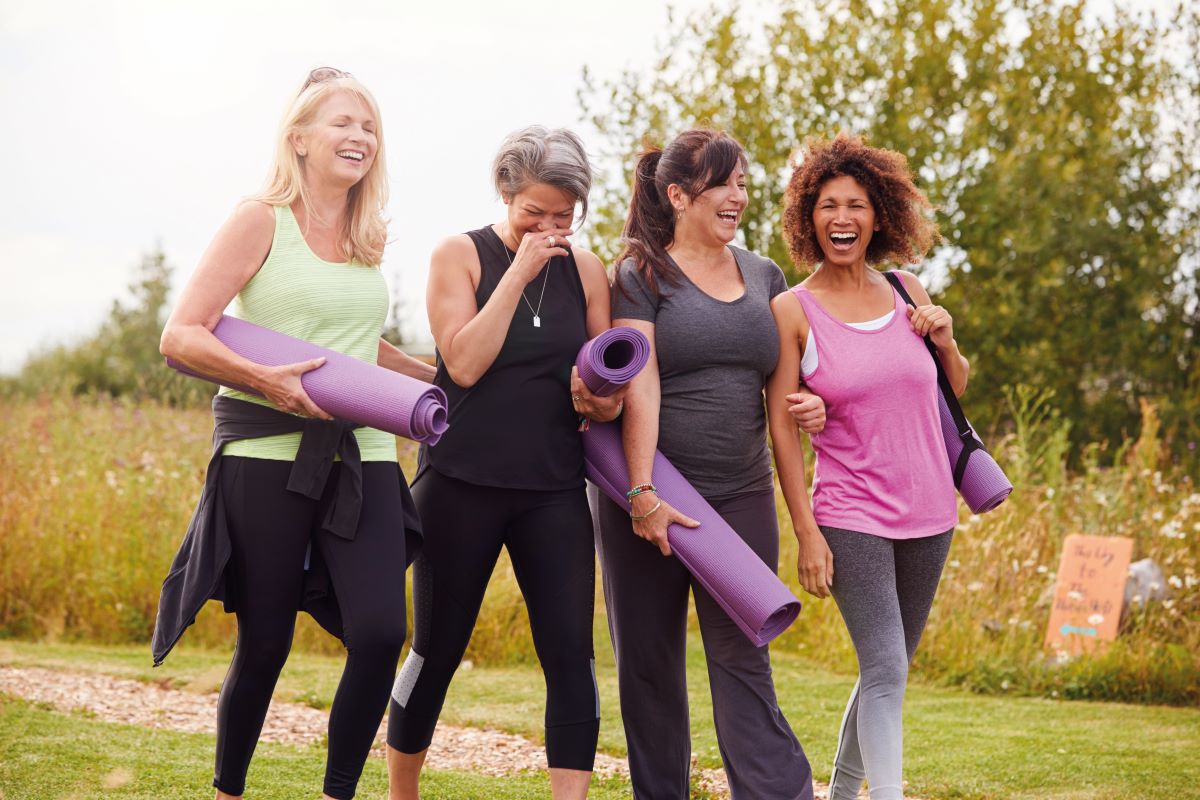Keeping fit is important at any stage of life, but when you’re approaching your middle years, working out could help you to better navigate the menopause. Personal trainer Lucy Gornall reveals how to train through symptoms and improve or maintain your fitness during the menopause…
Hot flushes, mood swings, weight gain, sleep loss…the perimenopausal years come with their fair share of exercise obstacles. Caused by a natural decline in oestrogen, the menopause is officially when periods have ceased for 12 consecutive months, but the bit that comes before it – the perimenopause – can last for months to years, beginning as early as your 30s. And the havoc it wreaks on the body could seriously sabotage your enthusiasm for exercise.
Related: Andrea McLean on the benefits of exercising during menopause
Indeed, the perimenopause comes with hormonal changes that can leave you feeling more tired than normal. The big hormonal change is the decreasing level of oestrogen, which slows the metabolism and causes muscle mass and bone density to decline, but many women also report an increase in body fat – especially around the tummy – and other symptoms such as night sweats that negatively impact sleep.
Benefits of fitness during menopause
The good news is that taking the time to work on your fitness during the menopause can help. Working out releases feel-good endorphins in the brain, which provide a great mood boost and can help to manage anxiety and stress. Even a simple walk can provide these benefits.
Exercise can also help with weight management. The perimenopausal weight gain that can occur as a result of hormonal changes tends to sit around the middle, but keeping activity will help to counteract this as it burns calories and keeps the core muscles strong.
You might not always feel like exercising but it can be a good way to support symptoms. Lifting weights, for example, is great for helping to maintain healthy bones, lowering the risk of osteoporosis (the weakening of bones that is common during menopause). Exercise has even been shown to help ease hot flushes, a common symptom of menopause, and this can also help boost a dwindling libido.

Working out releases feel-good endorphins in the brain, which provide a great mood boost and can help to manage menopause-related anxiety and stress.
Best types of exercise to try during menopause
The key when it comes to working on your fitness during the menopause is to be kind to yourself – slow any intense workouts down to strength training, walking and yoga. If you have more energy, then you can up the intensity, but don’t stress your body out too much. Here are the best exercises to boost your fitness during menopause.
Strength training
Strength training burns calories and helps maintain muscle mass, making it perfect for improving fitness during menopause. Fear not: lifting weights doesn’t need to mean breaking your back with insanely heavy dumbbells and barbells.
Aim to do two-to-three resistance-based workouts a week, focusing on the whole body. Some of the exercises can be bodyweight movements, but add dumbbells to your squats and lunges, throw in some biceps curls, triceps dips, dumbbell deadlifts and dumbbell presses.
Brisk walking
Walking is such an underrated exercise when it comes to improving fitness – whether you’re going through the menopause or not. It’s great for getting the heart rate up, plus it burns calories and releases the feel-good endorphins that help clear the mind, beat stress and ease anxiety (common symptoms of the menopause). And, it’s free of charge. Simply chuck on some comfy trainers, choose a podcast to listen to (or simply walk in silence, with or without a friend).
Yoga/Pilates
Holistic exercise is so beneficial for not only helping to maintain core strength, but also for building stability and balance. Core strength is important for every single movement you do, plus these calming activities are another great way to help overcome the feelings of anxiety that are so often associated with the perimenopause.

Why not attend a yoga class with some friends? Yoga and Pilates are beneficial for not only helping to maintain core strength, but also for calming feelings of anxiety.
Sports
Sports such as tennis or netball are not only good because they offer a social element, but also because they’re an enjoyable way to stay active. Plus, exercising with someone else can help to keep you accountable for moving regularly.
LIIT
Some people would recommend HIIT (high-intensity interval training). However, I suggest you don’t do more than one-to-two sessions a week, and keep them short. High-intensity workouts can place extra stress on the body if done too often. Plus, during the perimenopause, hormones are changing and the associated symptoms can be aggravated by too much extra stress. Far better to occasionally opt for LIIT (low-intensity interval training), instead.
Lucy Gornall is a personal trainer working with supplement and wellbeing brand Healthspan.








